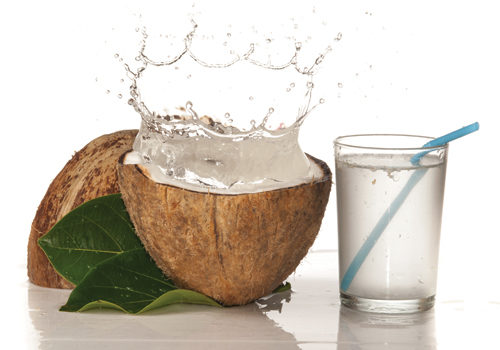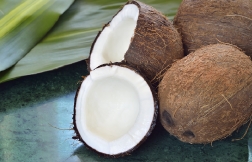This is not a rapid expansion, nor is it the resurgence of something dormant. No, the rise of the coconut market over the past few years has been more like the birth of something new. Where before there was only a niche interest, today there exists a profusion of products that rake in hundreds of millions in sales annually. The majority of this growth has occurred right here in North America.
Much of the boom has been led by coconut water, a sector that saw product launches increase more than five fold over the five-year period starting in 2008, according to Mintel (1). But coconut oil, coconut sugar and various other preparations and uses of coconut have exploded into the food and beverage market. The trend has also crossed over into dietary supplements and health and beauty products.
Watch your head! We’ve been shaking some palm trees to see what coconut wisdom might fall out. Here, we’ve pulled together insight into why companies choose to feature coconut, and why its flavor and health benefits are so valuable.
The Coconut Experience
Channeling Dustin Hoffman, Anurag Pande, Ph.D., vice president of scientific affairs at Sabinsa Corporation, East Windsor, NJ, imparts this timeless truism from the film Midnight Cowboy: “The two basic items necessary to sustain life are sunshine and coconut milk.” Pande says that sums it up nicely for one of the oldest rehydration options man has ever utilized.
Coconut beverages are a natural 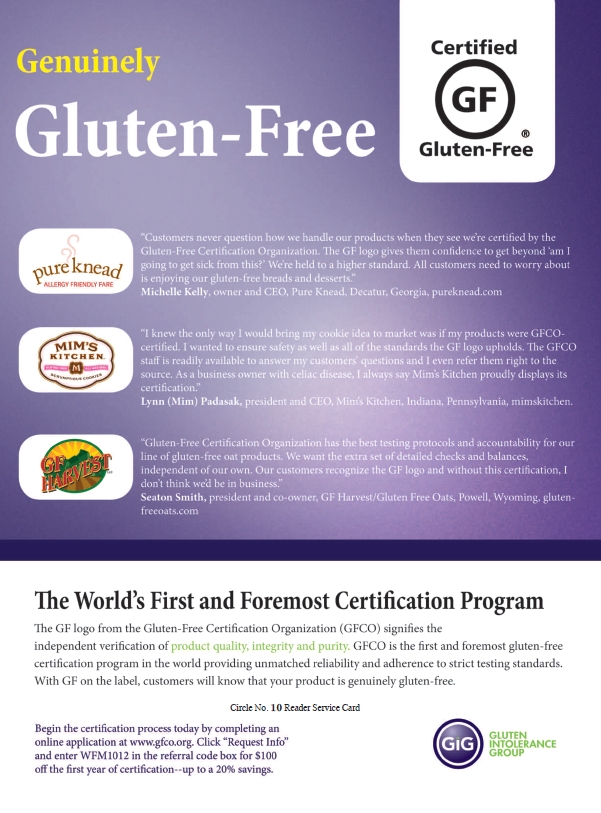 option for Millennials and the whole set of younger consumers that are becoming more health conscious, Pande explains. His company’s coconut extract ingredient (Cococin) delivers the nutrients in coconuts in the form of a freeze-dried powder that can be reconstituted into coconut water with flavor intact. In this way, coconut’s nutritional value is retained in a format that is easy to work into a variety of applications.
option for Millennials and the whole set of younger consumers that are becoming more health conscious, Pande explains. His company’s coconut extract ingredient (Cococin) delivers the nutrients in coconuts in the form of a freeze-dried powder that can be reconstituted into coconut water with flavor intact. In this way, coconut’s nutritional value is retained in a format that is easy to work into a variety of applications.
One brand says they added a coconut water powder in part to serve fitness-minded customers. “All whole foods have nutrients the body can use to prepare for and recover from intense exercise, but coconut water continues to be a strong favorite in sports nutrition for its electrolyte value,” says Frank Davis, founder and CEO of Activz, Orem, UT. Another motivation for launching a powder was to make things easier on consumers. “We chose to create a coconut water powder over creating a bottled drink because we wanted to provide a more convenient experience, making coconut water easy to ship, store and carry on the go,” Davis says.
The warm flavor of coconut palm sugar is a viable alternative to brown sugar, and is often used in Asian cuisine, says Sarah Miller, director of marketing for Wholesome Sweeteners, Sugar Land, TX. Her company began offering organic coconut palm sugar several years ago to provide customers with another sweetener choice.
Miller says two of the primary attractions were the functionality of coconut as a sweetener, and the ability to source it sustainably. No harmful pesticides or fertilizers are needed because the trees grow wild on farmers’ properties. They climb the trees to tap the coconut palm flowers at the top, and can continue to harvest nectar from one tree for 25–40 years.
In an effort to embrace Australia’s Sunshine Coast with its Aussie-style yogurt brand, Wade Groetsch, CEO of Noosa Finest Yoghurt, Bellvue, CO, says his company recently introduced both pineapple and coconut flavors. “Coconut has really taken off as a successful flavor in yogurt,” Groetsch says. The coconut provides a nice contrast to the velvety texture of yogurt, he explains, adding that the response to the flavor has been “amazing.”
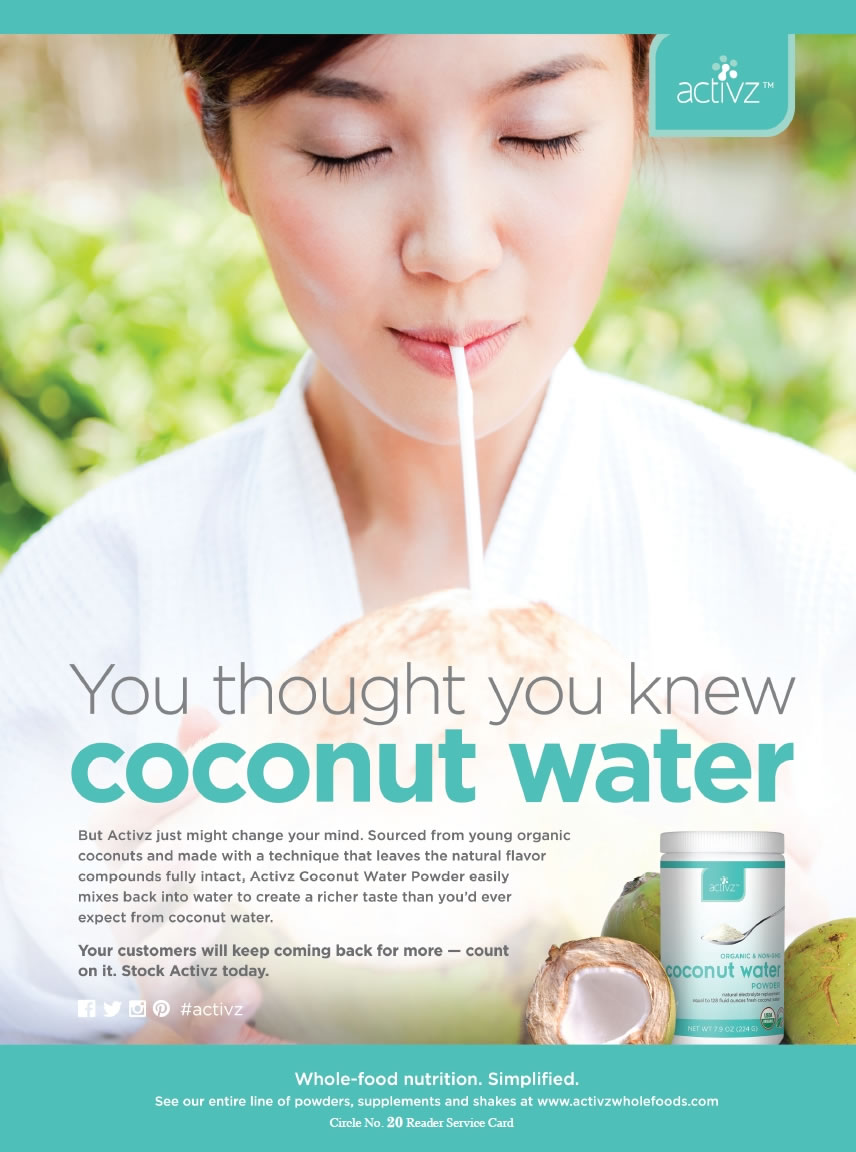 For a dairy-free ice cream brand that uses three bases in its flavors (coconut, soy and almond), coconut has a special appeal. “Our coconut line is our most popular line because it is the most similar tasting to traditional ice cream,” says Malcolm Stogo, CEO of Fal Foods USA and DF MAVENS, New York, NY. The brand started using coconut to take advantage of its flavor and creamy texture. “Additionally, coconut offers a good alternative for people that would like to enjoy dairy-free ice cream but cannot consume almonds or soy due to allergies,” Stogo says.
For a dairy-free ice cream brand that uses three bases in its flavors (coconut, soy and almond), coconut has a special appeal. “Our coconut line is our most popular line because it is the most similar tasting to traditional ice cream,” says Malcolm Stogo, CEO of Fal Foods USA and DF MAVENS, New York, NY. The brand started using coconut to take advantage of its flavor and creamy texture. “Additionally, coconut offers a good alternative for people that would like to enjoy dairy-free ice cream but cannot consume almonds or soy due to allergies,” Stogo says.
Though coconuts have been a staple ingredient in the diets of Pacific, Asian and African peoples for centuries, the health benefits of coconut, including immune-boosting qualities, have only come to the fore in the West very recently, says Ian Johnson of CO YO, Albuquerque, NM. Before founding his coconut milk-based yogurt alternative company, Henry Gosling learned to appreciate the flavor of coconut growing up in Fiji, says Johnson. Gosling’s nutrition background allowed him to produce a recipe that combines creamy milk derived from coconut with probiotic cultures to form a yogurt alternative “for the health conscious and dairy intolerant,” Johnson says.
Among dairy alternatives, Johnson says coconut milk (and the cream that can be made from it) is unique for its natural sweetness and creamy texture. “We felt that there was an opportunity to provide an original product that not only tasted delicious, but was also rich in nutrients and lacked dietary risks,” he says.
“The need and desire for delicious dairy-free alternatives are exploding,” says Mike Murray, vice president of marketing and R&D for So Delicious Dairy Free, Eugene, OR. In response to that need, his company offers coconut milk-based frozen desserts, cultured products, coffee creamers, culinary milks, holiday beverages, a whipped coconut topping and more.
Murray says they turned to coconut for many reasons, one being that they were able to secure a supply of organic coconuts for the entire line. Coconut’s taste qualities as a base in foods and beverages were another reason, including the fact that coconut carries other flavors well, he adds. His company also considered its special nutritional properties and its low carbon footprint, especially when compared with dairy production.
In combining coconut oil with popcorn, Kristy Lewis, CEO and 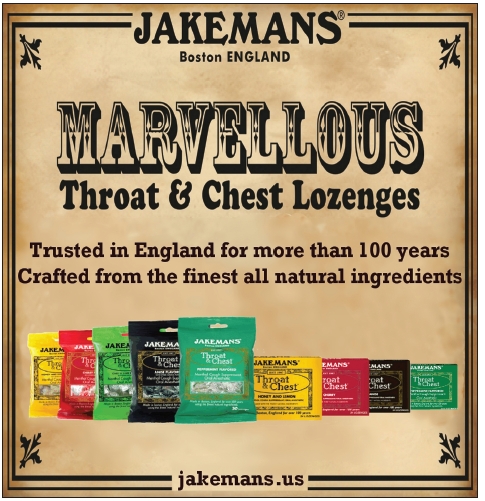 co-founder of Quinn Popcorn, says her brand is really just getting back to basics. “There is actually some history behind putting coconut oil and popcorn together. That’s how movie theaters used to pop popcorn back in the early days,” she says.
co-founder of Quinn Popcorn, says her brand is really just getting back to basics. “There is actually some history behind putting coconut oil and popcorn together. That’s how movie theaters used to pop popcorn back in the early days,” she says.
Kelly Shone, director of marketing for Bioriginal Food & Science Corp., Saskatoon, SK, Canada, says her company began working with coconut growers over 11 years ago, before the coconut trend went big time. “We saw the potential in this ingredient as a premium oil alternative with a unique fatty acid profile, and we have been building relationships with growers for over a decade and our expertise in the process and packaging of coconut oil has continued to increase,” she says.
Others got into the coconut game due to demand. Debbie Shandel, executive vice president and chief marketing officer of Carrington Co., LLC, says her company was approached by a big chain that asked them to develop a coconut oil program. “During the research process for this customer, we discovered all of the amazing benefits of coconut oil and realized just how versatile it truly is. Once we began working with our growers and producers, we were able to develop broader distribution options and additional opportunities,” Shandel says.
It is important to stay on top of trends as a dietary supplement company, says Kylee Wilkins, content writer for NutriGold, Orem, UT, while remaining committed to marketing clinically studied products. “Coconut oil happens to be a hot trend that also has several nutritional qualities, so it was a win-win for us and our consumers. It is a great addition to our supplement line because of its versatility, safety and effectiveness,” Wilkins says. She adds that the company also felt it was filling a market void, as not very many organic, cold-pressed coconut oils were available in a certain price range.
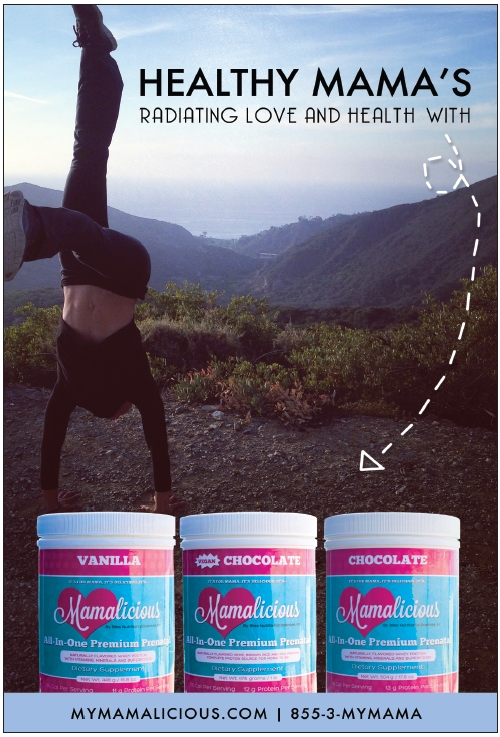 A purveyor of coconut oil for over a decade, Liz Kaplan, director of marketing for Nutiva, Richmond, CA, says her company has long valued it for its nutritional content. “As consumers have learned more about the nutritional composition of coconut, it’s definitely gone more mainstream,” she says. Coconut is highly versatile, with applications in everything from cooking to body care, she notes. To respond to the demand, Kaplan says her company has recently launched coconut flour, refined coconut oil and
A purveyor of coconut oil for over a decade, Liz Kaplan, director of marketing for Nutiva, Richmond, CA, says her company has long valued it for its nutritional content. “As consumers have learned more about the nutritional composition of coconut, it’s definitely gone more mainstream,” she says. Coconut is highly versatile, with applications in everything from cooking to body care, she notes. To respond to the demand, Kaplan says her company has recently launched coconut flour, refined coconut oil and
coconut-based snacks, among other items.
Adding organic coconut oil to its lineup of oils four years ago was a natural decision for Barlean’s, Ferndale, WA, says marketing director Andreas Koch. “Since flaxseed oil can be integrated into many recipes, adding coconut oil as a culinary alternative to vegetable oil was an obvious choice,” Koch says.
As the broader coconut universe continues to expand, it all still revolves around that essence of the fruit: coconut water. Mark Rampolla, founder of ZICO Premium Coconut Water, El Segundo, CA, says that his company’s story began while he was in Central America volunteering with the Peace Corps, when he noticed that locals drank sweet coconut water to hydrate. After deciding to bring coconut water stateside, he initially sold it out of a van to New York City yoga studios. It became a huge hit, and Rampolla says today the product is sourced from Thailand, Indonesia and the Philippines, where suppliers work directly with coconut plantations and hundreds of local farmers.
Coconut Cross-Section
When we crack open a coconut, we’ll find a lot to like about its health impacts, taste profile, versatility and functionality in a wide range of applications.
Nutritional breakdown. American consumers have embraced coconut water as a superb way to hydrate themselves, according to Jeff Rubenstein, senior vice president of marketing for Vita Coco, New York, NY. He says it is naturally dense in electrolytes, especially potassium, which helps accelerate the hydration process. This quality has made it a popular alternative to soda, energy drinks and fruit juices, Rubenstein says.
Rampolla notes that every container of his company’s coconut 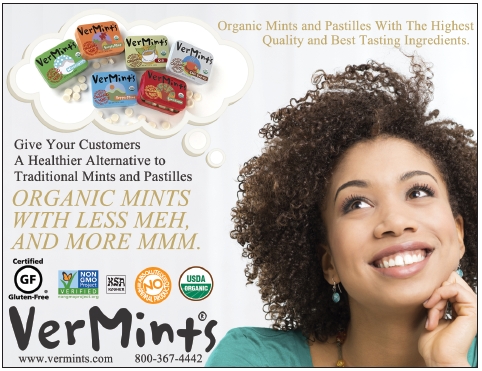 water contains as much potassium as a medium-sized banana. Coconut water (as opposed to other products of coconut) is naturally free of fat and cholesterol, as well, Rampolla says.
water contains as much potassium as a medium-sized banana. Coconut water (as opposed to other products of coconut) is naturally free of fat and cholesterol, as well, Rampolla says.
It is important to differentiate between coconut water and coconut milk, as the two are sometimes confused, Pande explains. The milk is obtained from the flesh, or meat, of fully formed coconuts, while coconut water is the liquid endosperm derived from the interior of coconuts that are typically still immature and green. For his company’s proprietary ingredient, Pande says the water goes through microfiltration to remove extraneous material, and is then freeze dried to maintain the nutrient content.
Pande says the water used for this ingredient is high in growth factors like shikimic acid, quinic acid and indole 3 acetic acid, as well as essential vitamins, amino acids and minerals. According to Stogo, vitamins C, E, B1, B3, B5 and B6, and minerals like iron, selenium, sodium, calcium, magnesium and phosphorous are all present in coconut, and they are also rich in fiber.
Medium-chain triglycerides (MCTs) are often mentioned in the coconut/health conversation, and for good reason. Rakesh Kapoor, Ph.D., director of science and technology for Bioriginal, says coconut oil is composed mostly of MCTs, which are processed differently by the body than long-chain fatty acids. “They are mainly metabolized for the production of energy and are not stored in fat tissues of the body,” Kapoor says.
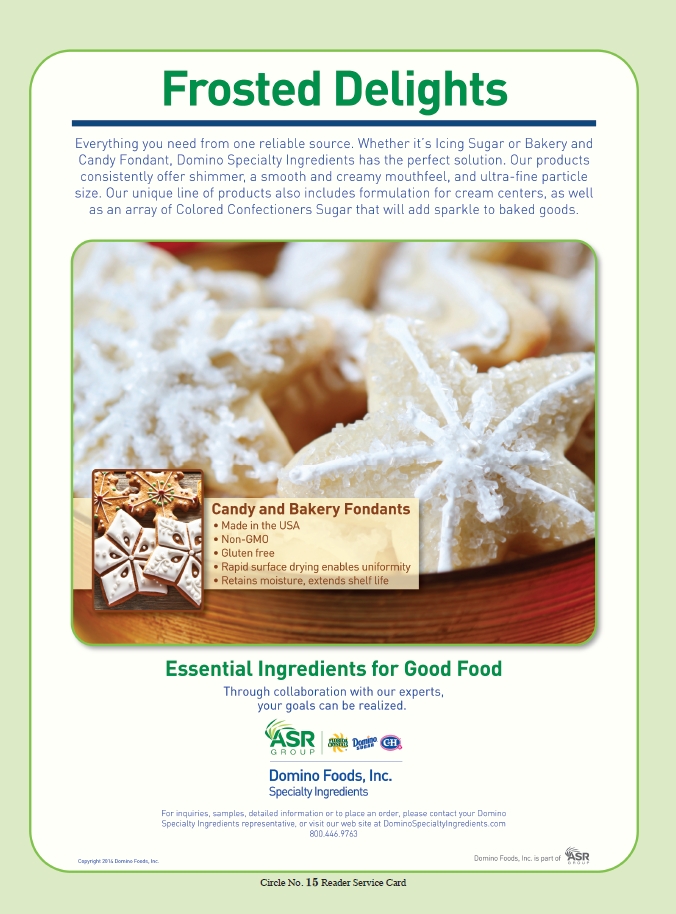 The liver is responsible for breaking down the MCTs in coconut milk or oil, Murray says. Wilkins adds that the quick conversion of MCTs into energy, in turn, supports metabolism and digestion.
The liver is responsible for breaking down the MCTs in coconut milk or oil, Murray says. Wilkins adds that the quick conversion of MCTs into energy, in turn, supports metabolism and digestion.
Though saturated fats have a bad name, Jonny Bowden, Ph.D., CNS, member of the scientific advisory board of Barlean’s, explains that MCTs are a particularly healthy form of saturated fat. People are beginning to realize this, according to Kaplan. “There’s definitely been a shift in how consumers perceive fats; coconut oil’s nutritional profile has become recognized as beneficial versus how it was perceived 10 years ago,” she says.
Kaplan says her company’s coconut oil is comprised of 62% MCTs and contains both lauric and caprylic acids. Bowden says that these two acids have known anti-fungal and anti-microbial benefits. “Lauric acid, for example, helps combat fungus, bacteria and viruses by disrupting their membranes and making them less potent,” he says.
Bowden says coconut oil is receiving attention for its potential to benefit brain health. “More research is needed, but many health professionals are incorporating coconut oil into their protocols for brain health,” he says. Stogo adds that in addition to being linked with cognitive benefits, including for those with Alzheimer’s disease, coconut has been shown to help support healthy body fat composition and heart health and even to improve issues like acne and damaged hair.
Going into more detail on some of these coconut research focus areas, Kapoor tells us that though it is a saturated fat, coconut oil does not impact blood lipids negatively. Instead, it leads to increases in HDL (good cholesterol) and reductions in the important LDL/HDL ratio. He says that coconut oil has not only reduced LDL cholesterol in animal studies, but has also reduced in-vitro LDL oxidation, a significant risk factor for cardiovascular disease (2). Other areas that research shows coconut oil may benefit, according to Kapoor, include obesity and skin issues like atopic dermatitis and wound healing.
With its “good” medium-chain fatty acids and immune-boosting lauric acid, Johnson says the benefits of coconuts are legendary. In addition to some of the benefits already mentioned, Johnson lists diabetes support, support for conditions like Crohn’s disease and IBS, chronic fatigue support and even wrinkle reduction.
The functionality of coconut and its impressive 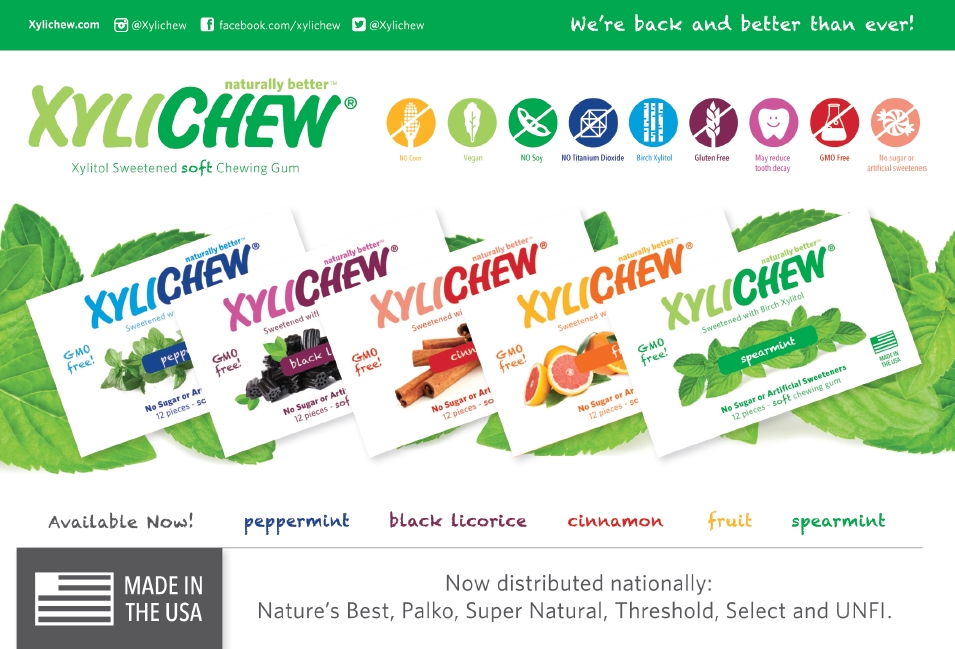 healthful qualities make it a suitable option and alternative for many daily tasks. Shandel says that mixing coconut oil with coffee will help provide sustained energy throughout the day. Adding it to baked goods in place of more traditional fats like butter or vegetable oil is a healthy option, she adds. Customers can also use it in some surprising ways. “Coconut oil has been known to have many health benefits, but also makes a great skin moisturizer and hair conditioner,” Shandel says.
healthful qualities make it a suitable option and alternative for many daily tasks. Shandel says that mixing coconut oil with coffee will help provide sustained energy throughout the day. Adding it to baked goods in place of more traditional fats like butter or vegetable oil is a healthy option, she adds. Customers can also use it in some surprising ways. “Coconut oil has been known to have many health benefits, but also makes a great skin moisturizer and hair conditioner,” Shandel says.
Taste and combinations. Asked to describe the taste of coconut, many feel the need to invent a new adjective. Though “coconutty” may not help describe the taste to someone unfamiliar, many are already acquainted with the taste of coconut, often from plucking the coconut variety out of a box of chocolates. So, it usually needs no further introduction. But the various preparations of coconut in the market today complicate matters, and it helps to know what to expect and why it all works from a taste perspective.
Raw, unprocessed coconut has a slightly sweet taste, Johnson says. Coconut cream and milk, extracted from the raw kernel of the coconut, provide a creamy, rich texture to work with, Johnson adds.
Stogo compares coconut milk with its dairy counterpart. “Fresh coconut milk has a consistency and mildly sweet taste similar to that of cow’s milk, but it is thicker and sweeter,” he says.
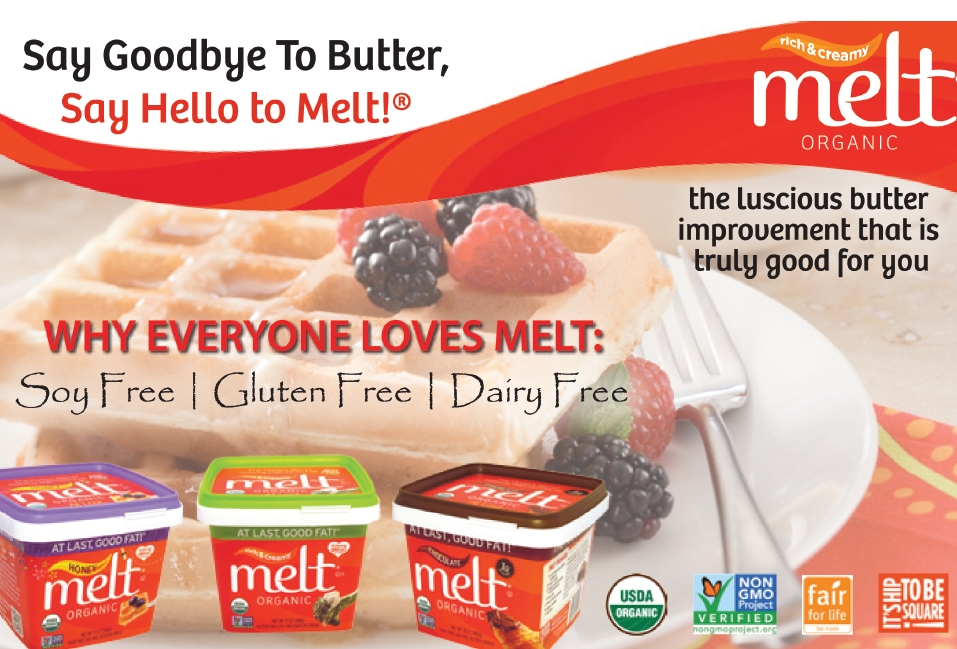 Shandel says her company’s organic extra-virgin coconut oil possesses a gentle coconut flavor and aroma that refined coconut oils usually do not. According to Kaplan, the flavor of any coconut product will depend on its freshness and the quality of its processing. “It’s definitely worthwhile to purchase from a trusted brand to ensure you’re getting something with a better taste,” Kaplan says.
Shandel says her company’s organic extra-virgin coconut oil possesses a gentle coconut flavor and aroma that refined coconut oils usually do not. According to Kaplan, the flavor of any coconut product will depend on its freshness and the quality of its processing. “It’s definitely worthwhile to purchase from a trusted brand to ensure you’re getting something with a better taste,” Kaplan says.
In addition, while many may not realize it, Rampolla emphasizes that coconuts from different regions of the world offer different taste characteristics and nutritional profiles. This is due, as with other plants, to varying soil and climate conditions. He says his company is committed to searching for the best tasting varieties. “Currently, our coconuts are hand harvested from Thailand, Indonesia and the Philippines,” Rampolla says.
It is also important to note, Pande says, that the most nutritious coconut water comes from the tender green coconut. “Based on the age of the coconut, the composition of the water changes. As the coconut matures, the nutrients present are exhausted in the development of the fruit, hence choice of raw material is important,” he says. He says his company’s ingredient is derived from tender green coconut, and rendered into a freeze-dried extract that can be used in teas and other beverages, as well as foods like cookies, candies and more.
A deep caramel flavor distinguishes unrefined coconut palm sugar, according to Miller. “It’s made by tapping the sweet nectar from the coconut palm tree flower and drying the nutrient-rich juice in a large open kettle drum. The juice condenses into a delicious, handmade whole brown sugar that adds warm color and a depth of flavor to baking,” she says.
Whatever the form, each of the ingredients derived from the fully formed coconut fruit (oil, milk and water) can impart a fresh coconut flavor and natural sweetness to baked goods and beverages, Kapoor says.
The natural sweetness of coconut can work  well alongside both sweet and savory flavors, Murray explains. “We created our coconut milk beverages to have a very neutral taste so that it was an ideal replacement for dairy milk,” he says, adding that the cultured variety of their coconut milk blends well with fruit flavors like blueberry and mango. Murray says they found that coconut coffee creamers complement coffee very well, so much so that they launched a shelf-stable coconut-based coffee beverage. He goes on to say they’ve had success with holiday beverage flavors like nog, mint chocolate and pumpkin spice that include coconut, as well as a variety of frozen desserts.
well alongside both sweet and savory flavors, Murray explains. “We created our coconut milk beverages to have a very neutral taste so that it was an ideal replacement for dairy milk,” he says, adding that the cultured variety of their coconut milk blends well with fruit flavors like blueberry and mango. Murray says they found that coconut coffee creamers complement coffee very well, so much so that they launched a shelf-stable coconut-based coffee beverage. He goes on to say they’ve had success with holiday beverage flavors like nog, mint chocolate and pumpkin spice that include coconut, as well as a variety of frozen desserts.
Within his company’s ice cream line, Stogo says coconut has been paired well with flavors like Madagascar Vanilla Bean and Key Lime Crème. Speaking in general, he says that “coconut milk and cream is an excellent substitute for dairy in cooking and baking.”
Many consumers like using coconut oil as a butter substitute in baking, as a sauté oil for fried food and in smoothies and desserts, Wilkins says. “It adds a hint of coconut aroma and flavor that people love. It’s also a popular oil for air-popped popcorn,” she says.
Coconut mixes well with other oils and fats if one wants to tone down the coconut taste, Bowden suggests. “I, for example, frequently mix coconut oil with some grass-fed butter to make scrambled eggs,” he says.
The coconut-based yogurt line from Johnson’s company has several flavor pairings (mixed berry, mango and chocolate) that have worked well. The yogurt has been used in a wide range of 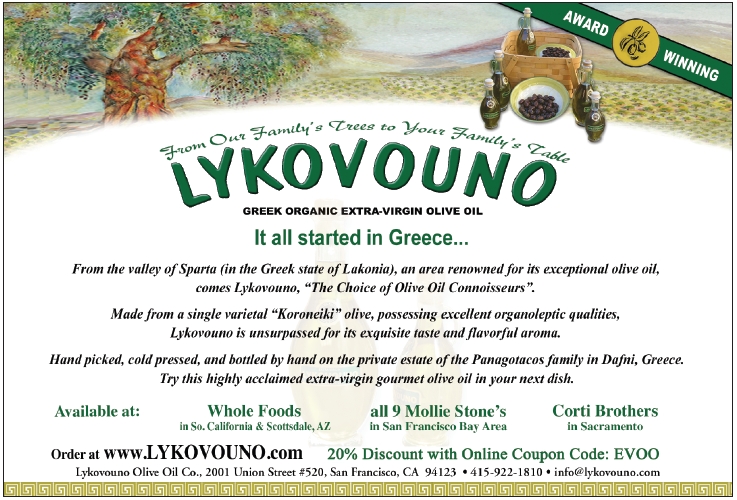 dishes, including some exotic recipes, and is suitable for dips and sauces, Johnson says.
dishes, including some exotic recipes, and is suitable for dips and sauces, Johnson says.
Groetsch says that real shredded coconut provides a great contrast to the velvety texture of his company’s yogurt, while its richness complements the whole milk in the yogurt. “The coconut itself is just a fun treat with tropical flair,” Groetsch says.
Also popular in baked goods like brownies, cookies and cakes is coconut palm sugar, according to Miller. It is also used as a topping for oatmeal, and as a way to sweeten some Asian recipes.
Working with coconut. The coconut products game is not without its challenges and considerations. But for the most part, coconut provides manufacturers and consumers an array of options due to its many great qualities.
A primary reason coconut oil is suited to baking applications is that it is a mostly saturated oil rich in medium-chain fatty acids, according to Kapoor. Baked goods made with coconut oil stay fresh longer, he adds. “Coconut oil is a stable oil, not prone to oxidation. As a result, products formulated with coconut oil are not prone to oxidative damage,” Kapoor says.
Johnson says his company’s original yogurt recipe came about after nearly a year of research and development. It was a challenge, he says, to maintain the consistency of the “good” saturated fats in the product while manufacturing it in Australia, the United Kingdom and the United States.
When hand-picking fresh coconuts, Koch says his company’s suppliers must make sure they are at the peak of flavor, aroma and nutrient value. “Coconuts that are immature, over-ripe or that have fallen to the ground are not used,” he says.
|
What’s Selling: Coconut Products Green Street Natural Food Harmony Health Foods Plum Natural Market Angeli Foods
|
|
For her company’s popcorn, Lewis says they use organic, extra-virgin, unrefined coconut oil because the lack of processing leaves the flavor intact. “Along with the health benefits of the oil, you also get a subtle coconut flavor and aroma,” she says.
Citing qualities of her company’s coconut oil like being pesticide- and additive-free, certified organic and Non-GMO Project Verified, Wilkins says they also choose to cold-press the oil as an extraction method. Instead of using high temperatures to process it, cold-pressing helps retain the nutritional qualities and flavor of the coconut, she says. Shandel also points out that post-processing, coconut oil will change from solid to liquid and back again based on room temperature, but this has no impact on the oil’s nutritional value.
Since a common complaint with coconut water is that the taste can become somewhat flat, Davis says his company makes sure they use high-quality techniques at every step of the supply chain to protect the natural nutrient and flavor compounds in its coconut water. “First the nutrient-rich liquid is cold-concentrated, and then it’s dehydrated with a proprietary method that targets the water molecules and leaves the nutrients intact,” Davis says of his company’s process.
Pande says the amorphous solids produced by the freeze drying process protect the protein in his company’s coconut extract ingredient, and make it stable during storage. He says it is available in various grades, which can be formulated into dietary supplements. In addition, with a self-affirmed generally recognized as safe (GRAS) notification, Pande says this powdered coconut water extract stands ready to use in a variety of foods and beverages as well.
Compared with other dairy-free bases like rice, soy and almond, Stogo says that coconut has some textural advantages. It is richer and creamier, with less of a watery or icy tendency than other dairy-free ice creams, which may melt more quickly than those with a coconut base. It can actually be very difficult, he says, especially if the coconut flavor is toned down, to detect which is real dairy ice cream and which is made from coconut.
Evaluating the Trend
There is no question that coconut has arrived, but most seem to agree that it will also prove to have staying power. Coconut water is one of the fastest-growing beverage categories in the United States, and it’s growing even faster overseas, says Rubenstein. Despite its popularity, he goes on to say, its household penetration is just 40% in major markets like New York, and far smaller in other markets. This, to Rubenstein, signals huge potential. Current sales numbers show it is beyond being called a fad, he says.
Coconut is here to stay, says Kaplan. “A lot of our customers have integrated coconut oil into their daily routines for both cooking and body care. It definitely feels more like a permanent lifestyle choice people are making versus a trend or fad,” she says. Rampolla believes the fact that his company has been able to expand its brand, including with products that blend fruit juices and coconut water, shows the upward trajectory of the category.
Years ago, coconut oil had a bad reputation in some circles due to its saturated fat content, Shandel explains, stating, “However, with new research, we now know that not all saturated fats are created equal.” Wilkins says that its growing health reputation will help coconut continue to surge. “Since it works as a healthy substitute for a variety of unhealthy foods (butter, shortening and vegetable oils), as well as beauty products (lotions, lip balm, hair products, etc.), it will likely be around for a long time!” she says.
Koch agrees, saying that Internet-savvy shoppers are uncovering the litany of health benefits linked with coconut, from immune health to energy. “The most recent development is exploration of coconut applications in sports nutrition, a growing market,” says Pande.
The versatility of coconut is piquing interest and spurring the word of mouth, blog and social network buzz coconut is enjoying, Shone says. “While all of this may have boosted trial among consumers, there wouldn’t be repeat purchase and consumer loyalty if these expectations were not met,” she says.
While something as popular as the coconut craze is going to bring in most consumers, there are some observations to be made on who exactly is buying. “While the primary consumer was previously the health-conscious consumer who purchased their coconut products solely in specialty stores, we are now seeing the user base grow to include the mass-market consumer who may have heard about coconut oil from mass media, friends or other influencers,” Shone says, noting that coconut products are now popping up in mass grocery and drug stores.
The parallel trend of dairy-free living is driving interest in coconut milk options, Murray says. Similarly, Stogo says that many people who have nut allergies and can’t have almond milk may be turning to coconut milk.
Wilkins observes that most of her company’s consumers are women ages 25 to 45. Although Koch says the primary consumer is still the typically affluent, health-conscious “early adopter,” the trend is beginning to appeal to more people as they come to realize the nutritional value in every serving of coconut. WF
See www.wholefoodsmagazine.com/grocery for additional coverage of the grocery category.
References
1. “Tropical Storm in the Food and Drink Market: Launches of Coconut Water Quintuple over the Past Five Years,” May 31, 2013, http://www.mintel.com/press-centre/food-and-drink/launches-of-coconut-water-quintuple-over-the-past-five-years, accessed Oct. 27, 2014.
2. S. Arunima, T. Rajamohan, “Virgin Coconut Oil Improves Hepatic Lipid Metabolism in Rats—Compared with Copra Oil, Olive Oil and Sunflower Oil,” Indian J. Exp. Biol. 50(11), 802-9 (2012).
Published in WholeFoods Magazine, December 2014

